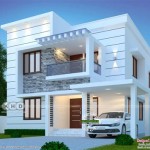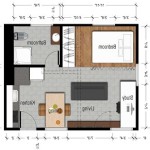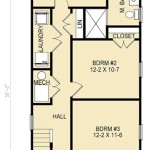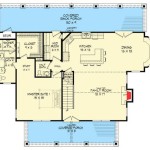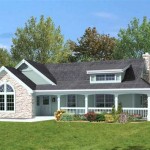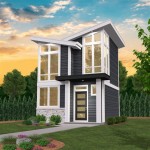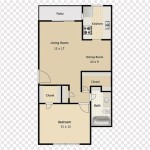Economical To Build House Plans: Maximizing Efficiency and Minimizing Costs
Constructing a new home represents a significant financial investment. One of the most influential factors affecting the overall cost is the house plan itself. Choosing economical house plans, designed with cost-effectiveness in mind, can drastically reduce construction expenses without necessarily sacrificing desired aesthetics or functionality. This article explores the key aspects of economical house plans, outlining strategies and considerations for achieving affordable home construction.
Understanding the Drivers of Construction Costs
Several factors contribute to the overall cost of building a house. These include materials, labor, land acquisition, permits, and design complexity. Economical house plans specifically address the material and labor components, aiming to minimize waste and streamline the construction process. Simplicity in design, efficient use of space, and readily available materials are hallmarks of cost-effective plans. Minimizing complex architectural features, such as intricate rooflines or unusual angles, directly reduces both material waste and the labor required for installation. The choice of materials also significantly impacts the budget. Opting for locally sourced, readily available, and cost-effective materials can substantially lower construction costs compared to high-end, imported alternatives.
Foundation type also plays a crucial role. Slab foundations are often the least expensive option, particularly in regions with stable soil. Crawl spaces and basements, while offering additional utility, require more excavation, concrete, and waterproofing, increasing the overall expense. The size and complexity of the plumbing and electrical systems are also directly related to the floor plan. Compact designs and strategic placement of utilities can minimize the length of runs, reducing material and labor costs. Ultimately, a well-considered house plan anticipates and mitigates potential cost overruns by optimizing the design for efficient material use and simplified construction techniques.
Key Features of Economical House Plans
Economical house plans share several common characteristics that contribute to their affordability. These features are carefully integrated into the design to minimize expenses without compromising structural integrity or livability. A primary focus is on simple shapes, such as rectangles or squares, which are easier and less expensive to frame and roof. Complex shapes, on the other hand, require specialized framing, more material waste, and increased labor time. Open floor plans, another common feature, reduce the need for interior walls, further lowering material and labor costs. Open designs also promote natural light and ventilation, potentially reducing energy consumption.
Efficient use of space is another key element. Economical plans often prioritize functional layouts with minimal wasted square footage. This means thoughtfully designing rooms to maximize their utility and avoid unnecessary hallways or nooks. For example, a combined living and dining area can provide ample space for both activities without requiring separate, dedicated rooms. Smart storage solutions, integrated into the design, can also reduce the need for larger overall square footage by maximizing the use of available space. Simplification extends to exterior features as well. Simple rooflines, minimal ornamentation, and readily available siding options all contribute to lower construction costs.
Furthermore, economical house plans often incorporate standardized dimensions and construction techniques. Using standard lumber sizes and framing methods reduces waste and simplifies the building process. Prefabricated components, such as trusses or wall panels, can also be utilized to speed up construction and reduce labor costs. The overall goal is to create a design that is straightforward to build, minimizes material waste, and can be constructed efficiently using readily available resources and skilled labor.
Strategies for Finding and Evaluating Economical House Plans
Finding the right economical house plan requires careful research and consideration of individual needs and priorities. Online resources, such as architectural websites and plan databases, offer a wide variety of affordable house plans. These plans often include detailed specifications, material lists, and estimated construction costs, providing valuable insight into the overall budget. Consulting with a local builder or architect is also highly recommended. They can assess the suitability of a particular plan for the specific site conditions, local building codes, and available resources. They can also provide realistic cost estimates based on local labor rates and material prices.
When evaluating house plans, it is essential to consider long-term costs in addition to initial construction expenses. Energy efficiency is a crucial factor. Look for plans that incorporate energy-efficient features, such as proper insulation, energy-efficient windows and doors, and provisions for solar panels or other renewable energy sources. These features can significantly reduce utility bills over the lifespan of the house, offsetting any initial investment. The adaptability of the plan is also important. Consider whether the plan allows for future expansion or modifications to accommodate changing needs. A flexible design can add value to the house over time and prevent the need for costly renovations in the future.
Finally, it is crucial to obtain multiple quotes from different builders before committing to a particular plan. This will provide a clear understanding of the potential construction costs and allow for informed decision-making. Carefully reviewing the specifications and material lists included with the plans is also essential to ensure that they meet the required standards and quality expectations. By taking a thorough and systematic approach to finding and evaluating economical house plans, it is possible to achieve affordable home construction without sacrificing desired aesthetics or functionality. Prioritizing value engineering, which involves identifying and eliminating unnecessary costs without compromising the quality of the final product, is a key strategy.

Est House Plans To Build Simple With Style Blog Eplans Com
What Is The Est Type Of House To Build Blog Floorplans Com

Building On The Affordable House Plans Of 2024 Houseplans Blog Com

Building On The Affordable House Plans Of 2024 Houseplans Blog Com

Affordable House Plans Our Est To Build Blog Homeplans Com

Building On The Affordable House Plans Of 2024 Houseplans Blog Com

Est House Plans To Build Simple With Style Blog Eplans Com

Est House Plans To Build Simple With Style Blog Eplans Com
Affordable House Plans Our Est To Build Blog Homeplans Com

To Build Dream Home Plans Dfd House Blog

